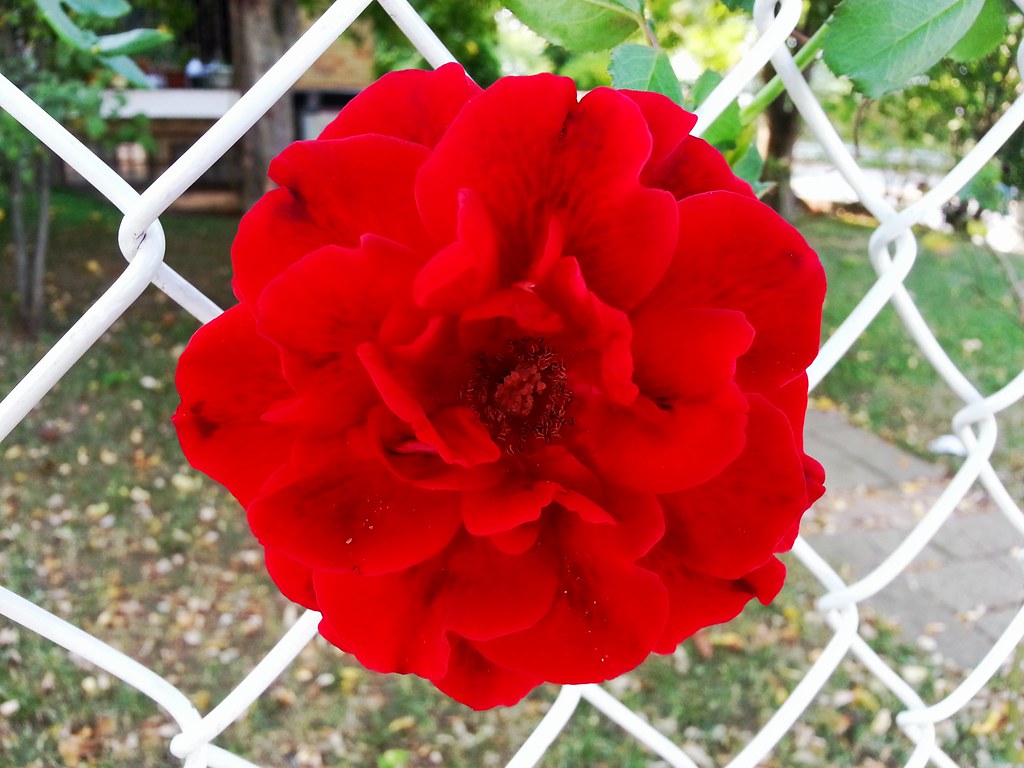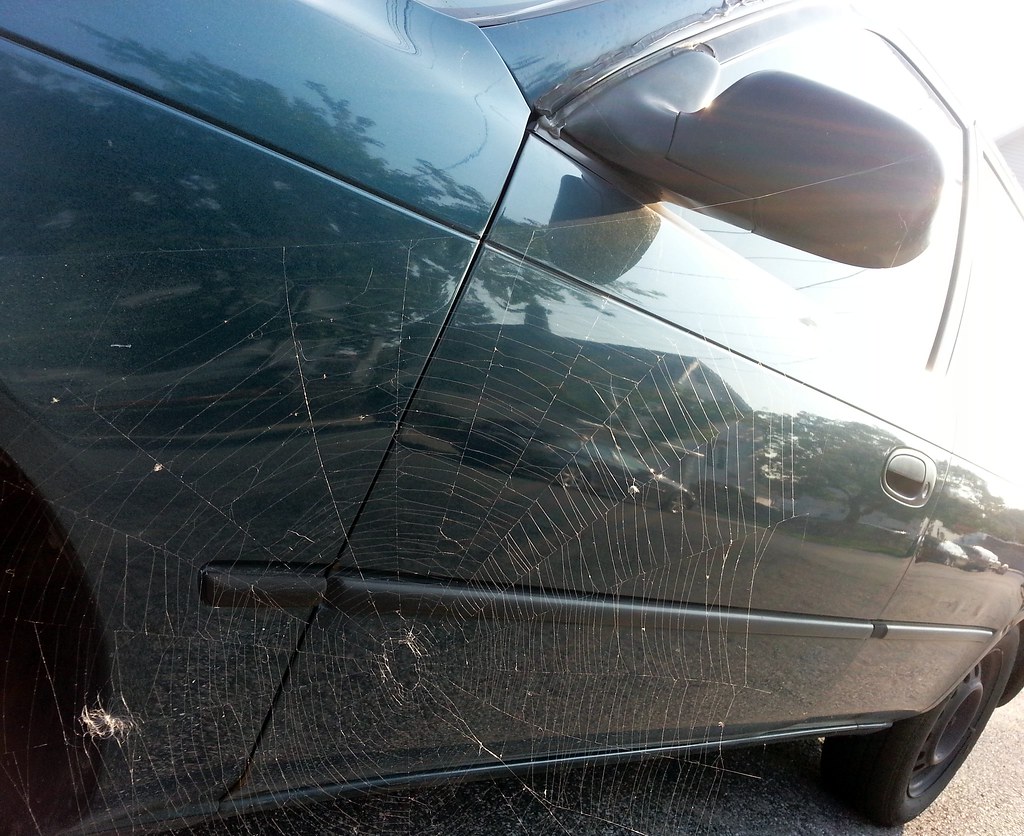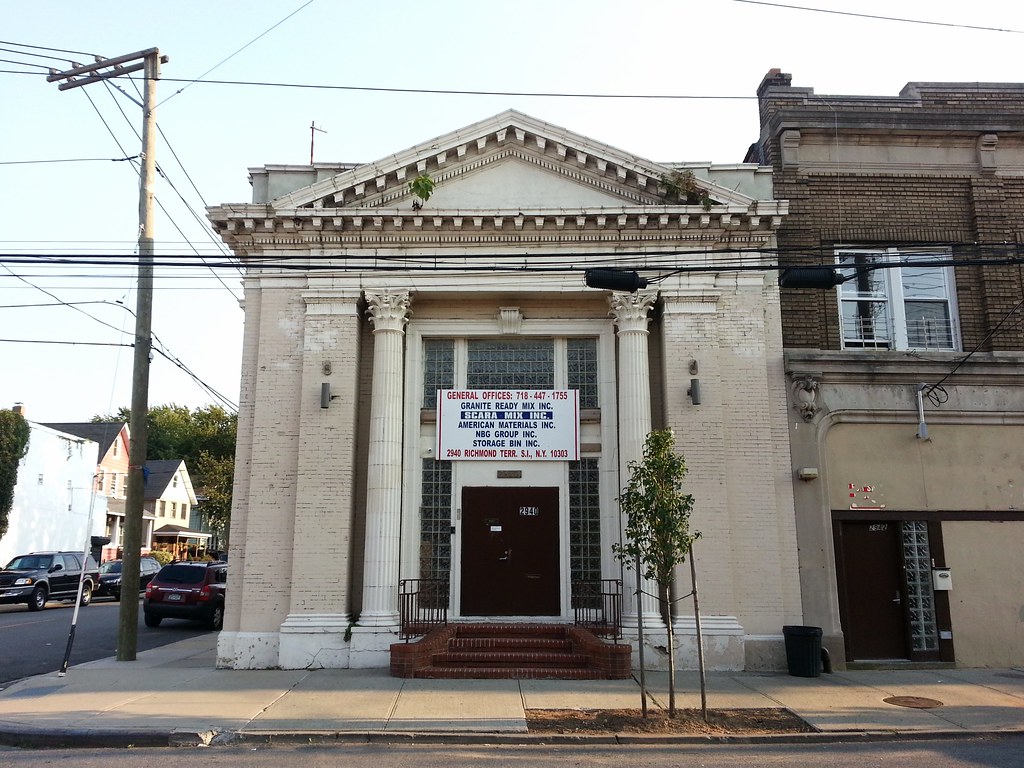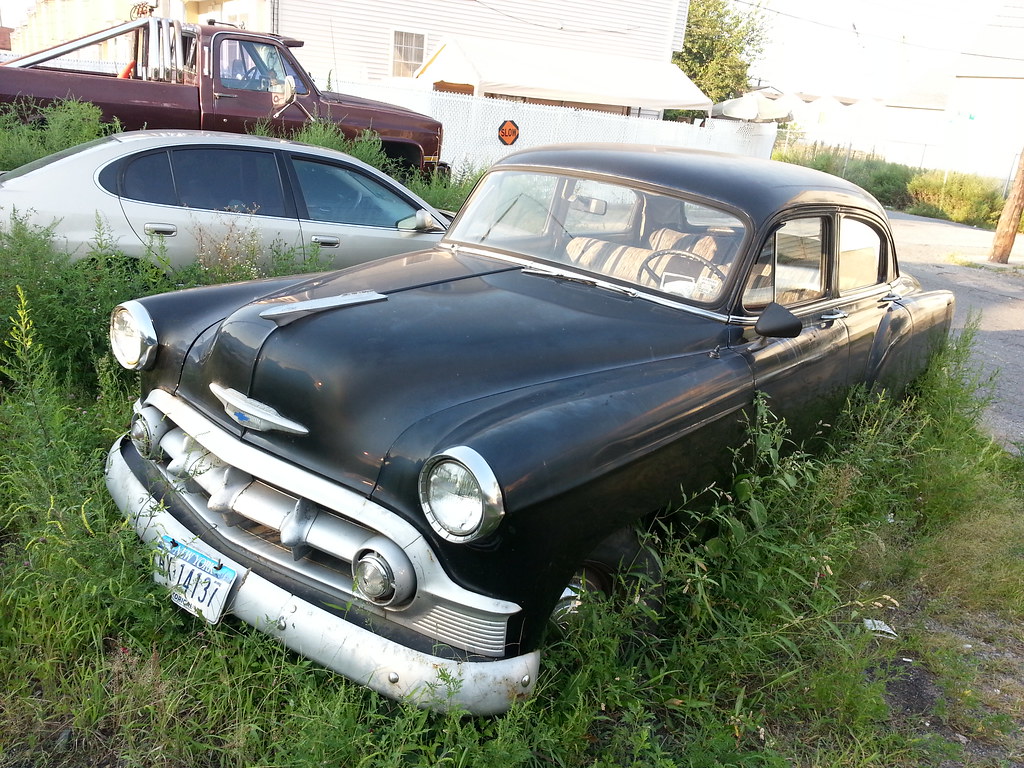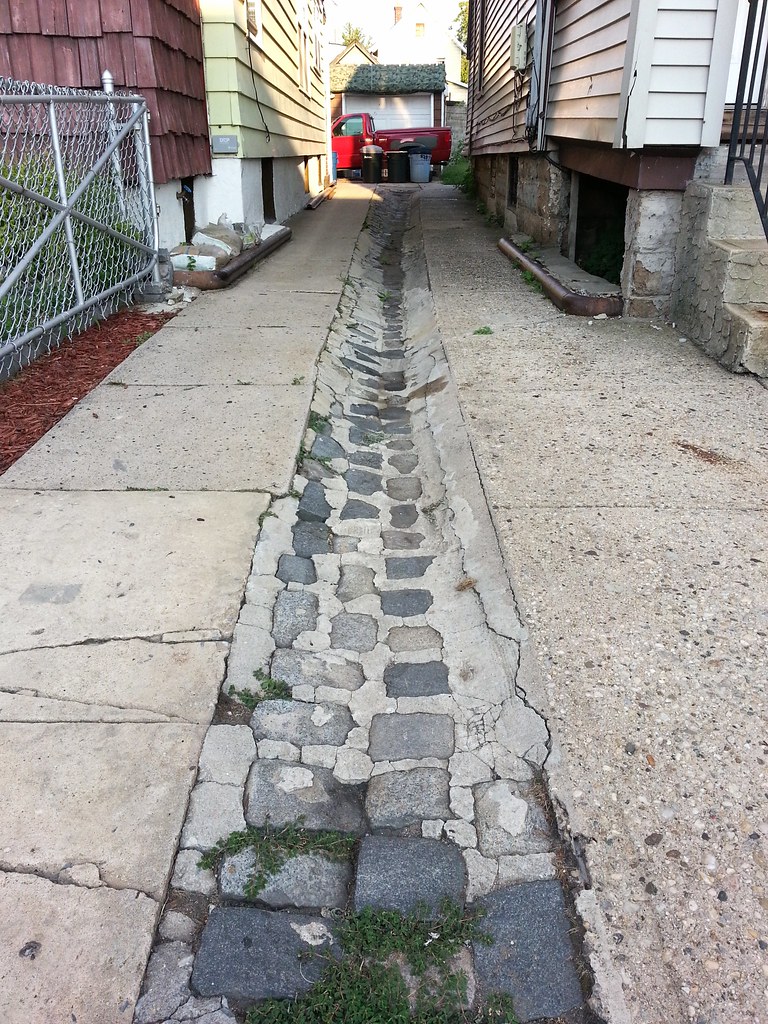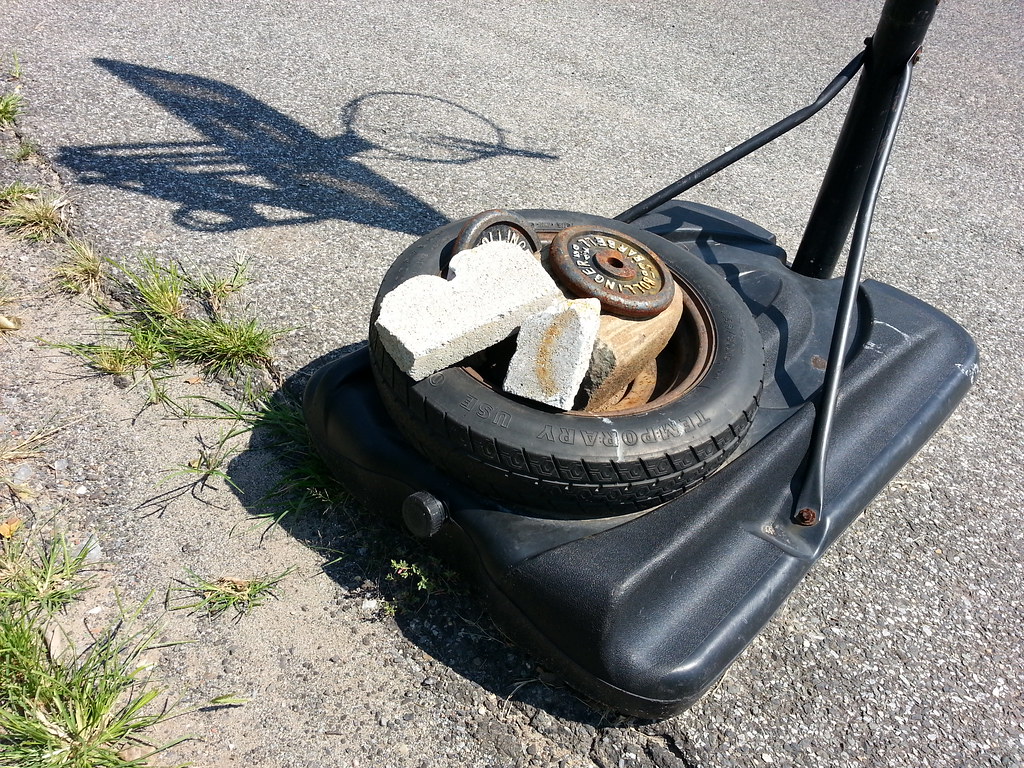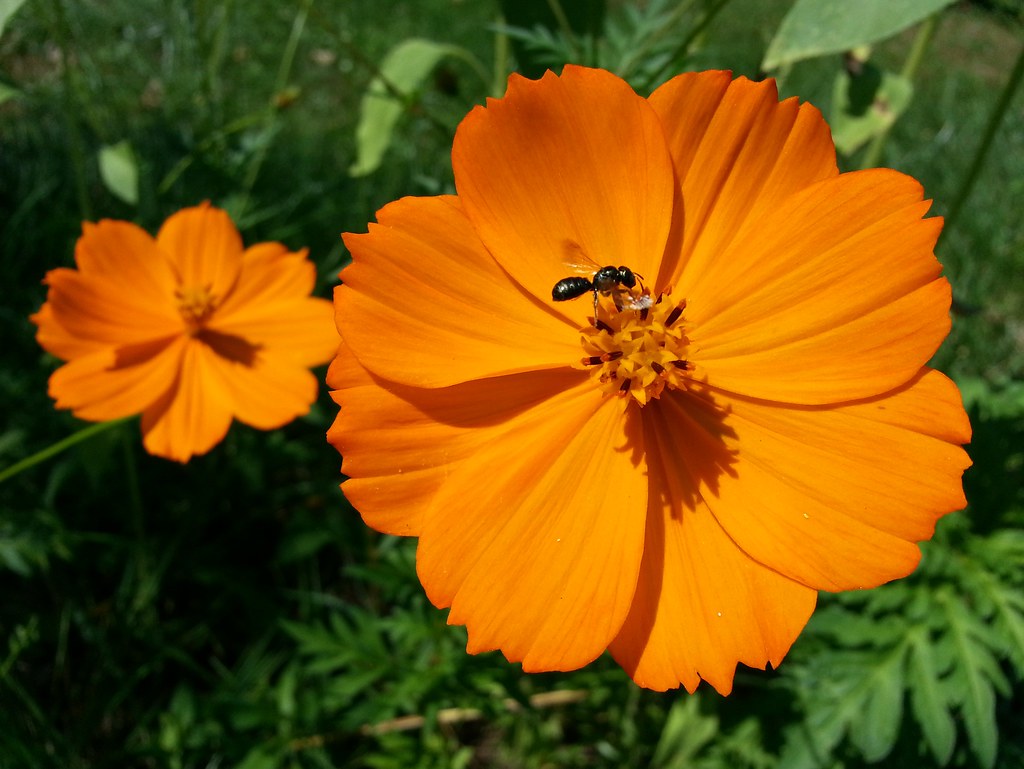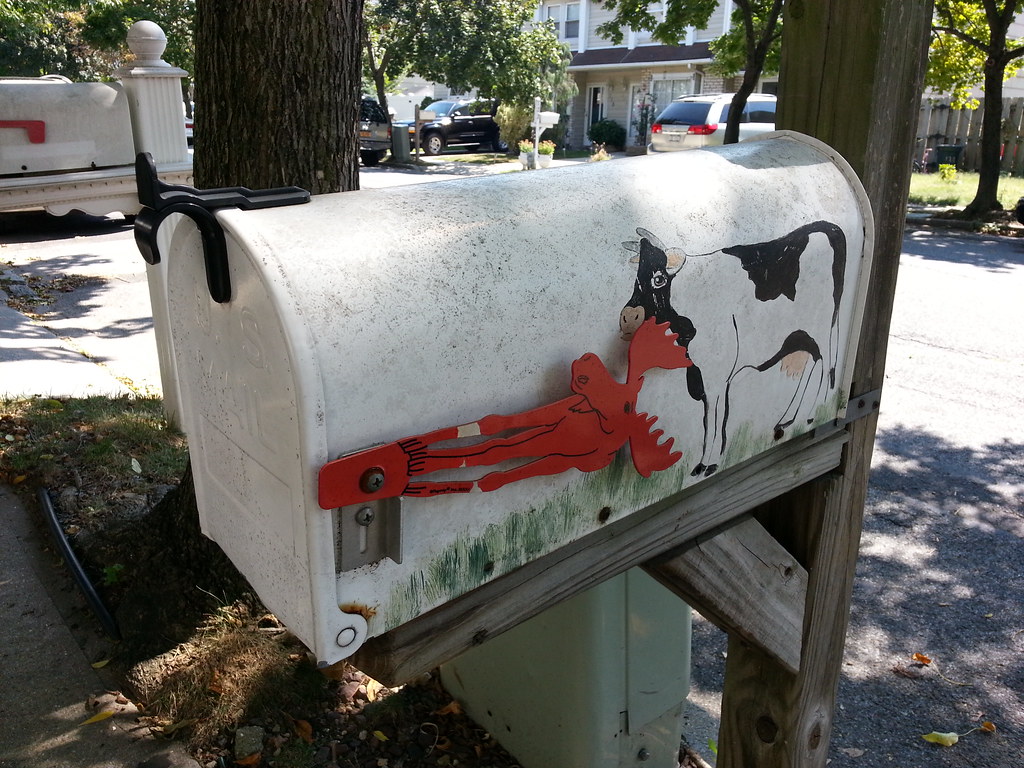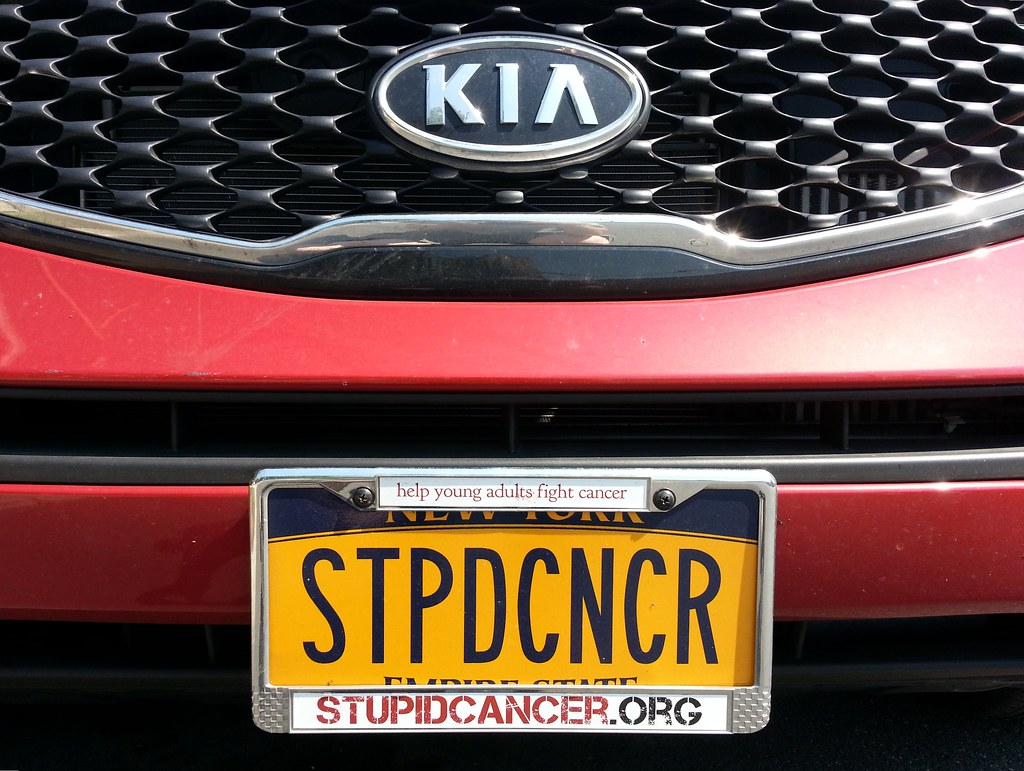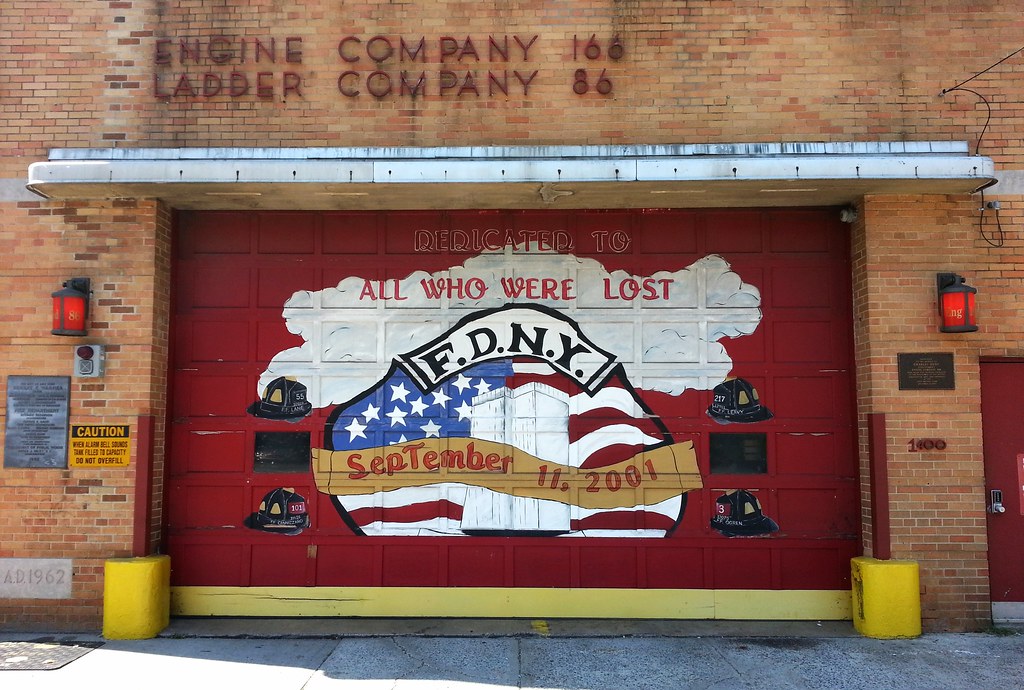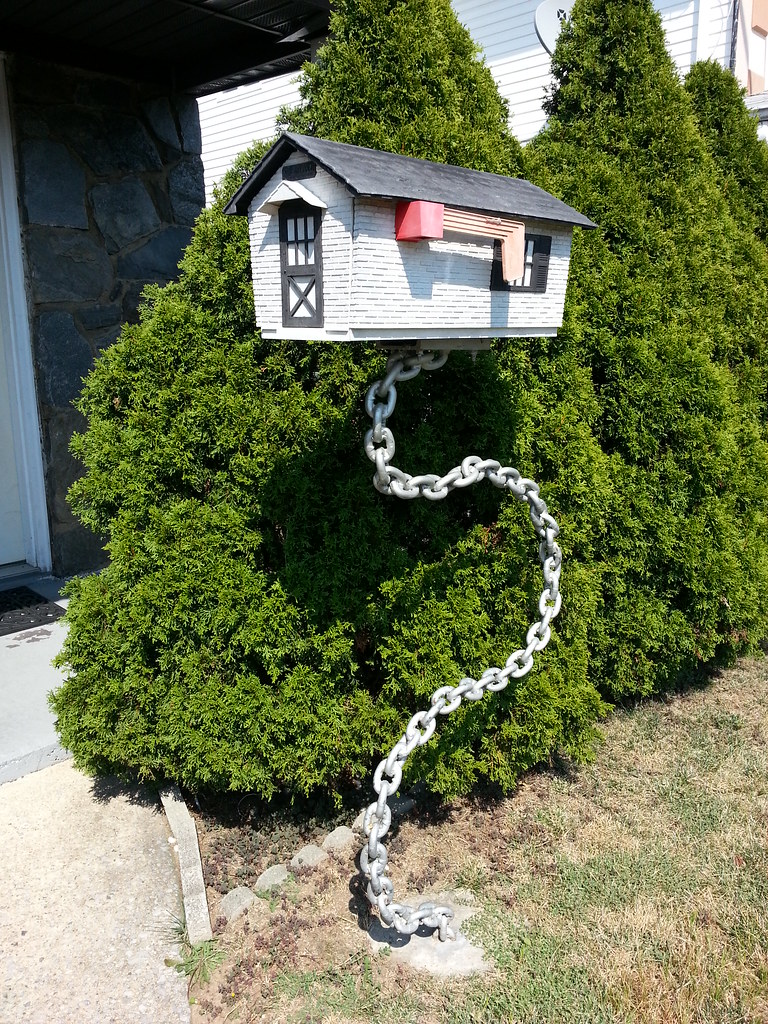
Almost entirely hidden behind the foliage (but visible if you zoom in near the center of the photo) is a remnant of the Staten Island Railway's North Shore branch, which once carried people and freight all the way across the island's North Shore (duh). Passenger service on this route ended in 1953 and freight operations terminated in 1989, although the eastern and western ends of the line have seen some use in the years since. The MTA is currently considering reviving the railroad's right-of-way for use as a bus rapid transit line.
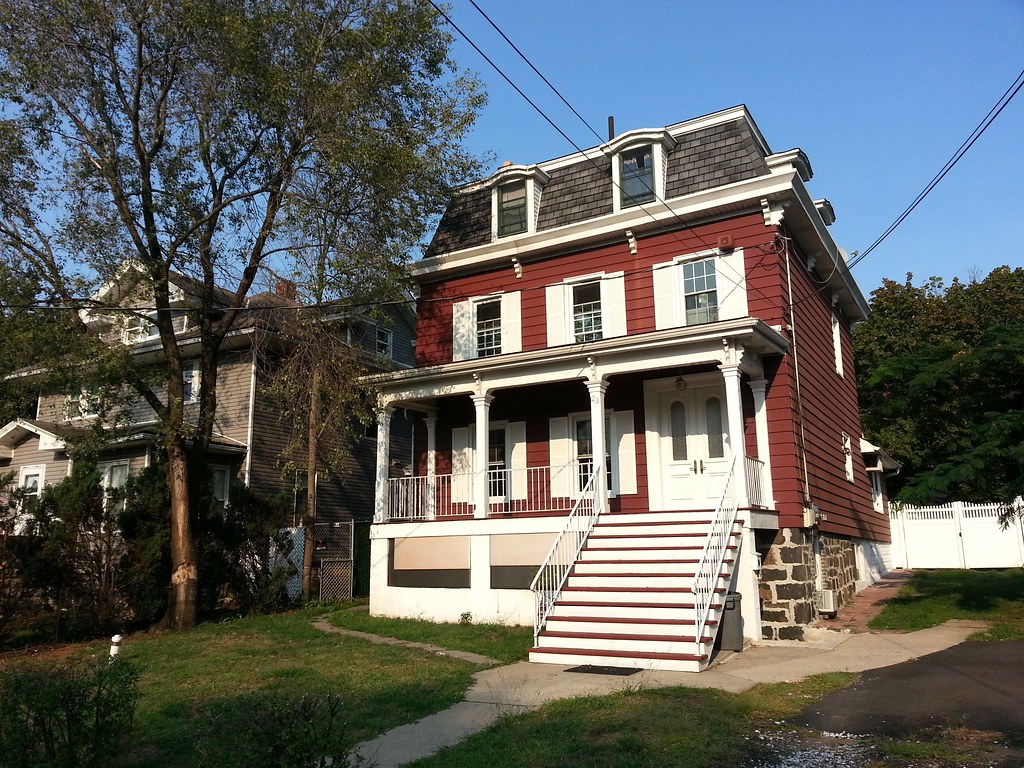
There are quite a few dignified old dwellings still standing in this waterfront neighborhood.
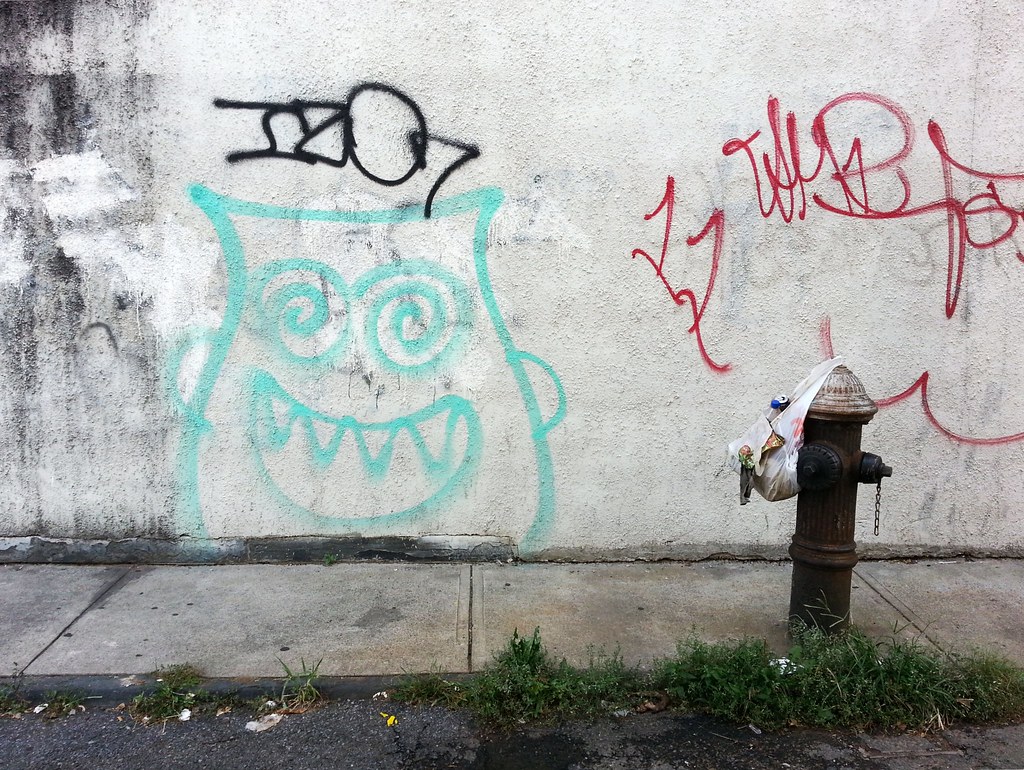
Making the trip out to western Staten Island! (We've crossed paths with him before in Brooklyn.)

of the aforementioned North Shore branch of the Staten Island Railway. As we've seen, the line is mostly in ruins east of this point, but, emerging from the woods just beneath the overpass where I'm standing, it runs as a freight line from here west to the Arthur Kill Bridge (the longest vertical lift bridge in the world), where it crosses into New Jersey.
There's another branch that runs south from this line to Fresh Kills — which, no longer an active landfill (it was once the world's largest), is now home to the Staten Island Transfer Station — allowing all the island's garbage to be hauled down to South Carolina by rail, part of a larger city effort to dramatically reduce the role that trucks play in the waste disposal system.
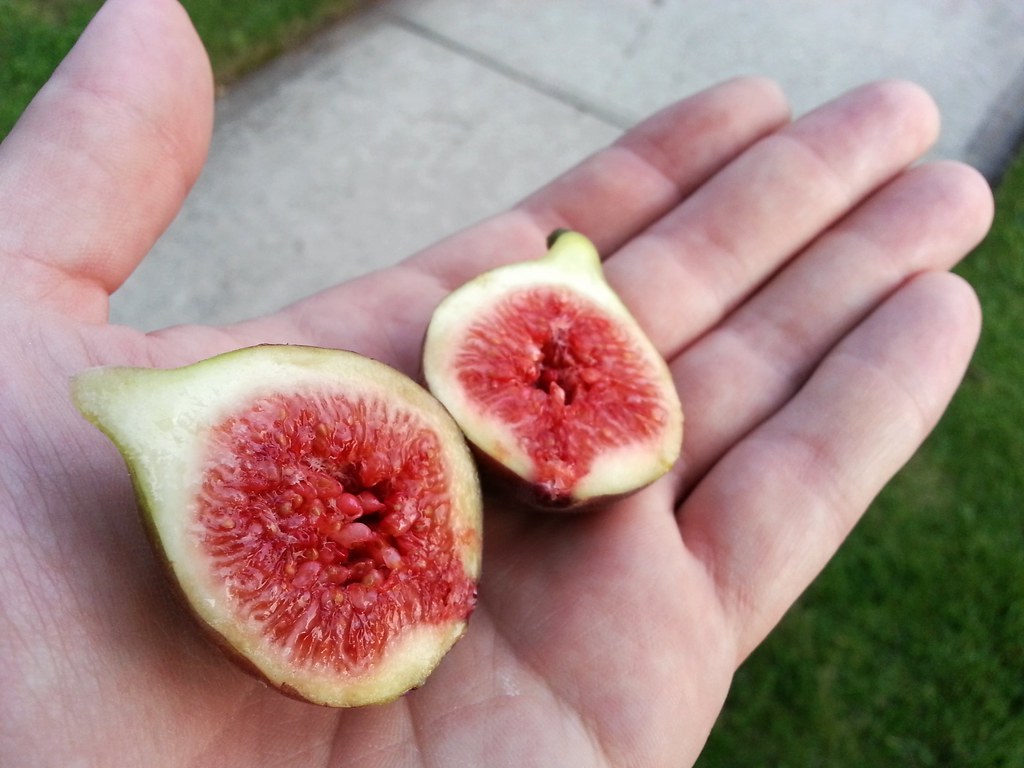
Something I never knew before I started this walk: there are approximately 500 gazillion fig trees in New York City. In some parts of the outer boroughs, I'll see a dozen or more each day. This particular fig is of the Brown Turkey variety, but you can find other types growing in the city as well.
While we think of figs as individual fruits, they're actually inside-out inflorescences — each of those fleshy little strands is actually a tiny flower! But how on earth do these flowers get pollinated? As we learned earlier, figs have an amazing relationship with a very small, specialized kind of wasp:
A female wasp of this type is able to crawl inside a fig through a tiny opening opposite the stem. Once inside, she lays her eggs, and in the process transfers pollen from the fig in which she was born. The larvae feed on the individual flowers in which they are growing until they reach maturity, at which point the males and females mate. The males then chew tunnels leading out of the fig and subsequently die, and the females (bearing pollen from the fig's flowers) escape through these tunnels and seek out new figs in which they can lay eggs of their own.Things get a bit more complicated — and interesting — with gynodioecious species (whose ranks include the figs typically grown in the US); you can learn more about them here if you are so inclined.
I should also note that the fig cultivars generally found in NYC, like the Brown Turkey, are parthenocarpic, which means they produce sterile fruit that does not require pollination — or wasps — to develop. (California's Calimyrna figs, on the other hand, must be pollinated for the fruit to mature. This has resulted in a strange-looking annual ritual in which paper bags are stapled to thousands of acres of fig trees.)
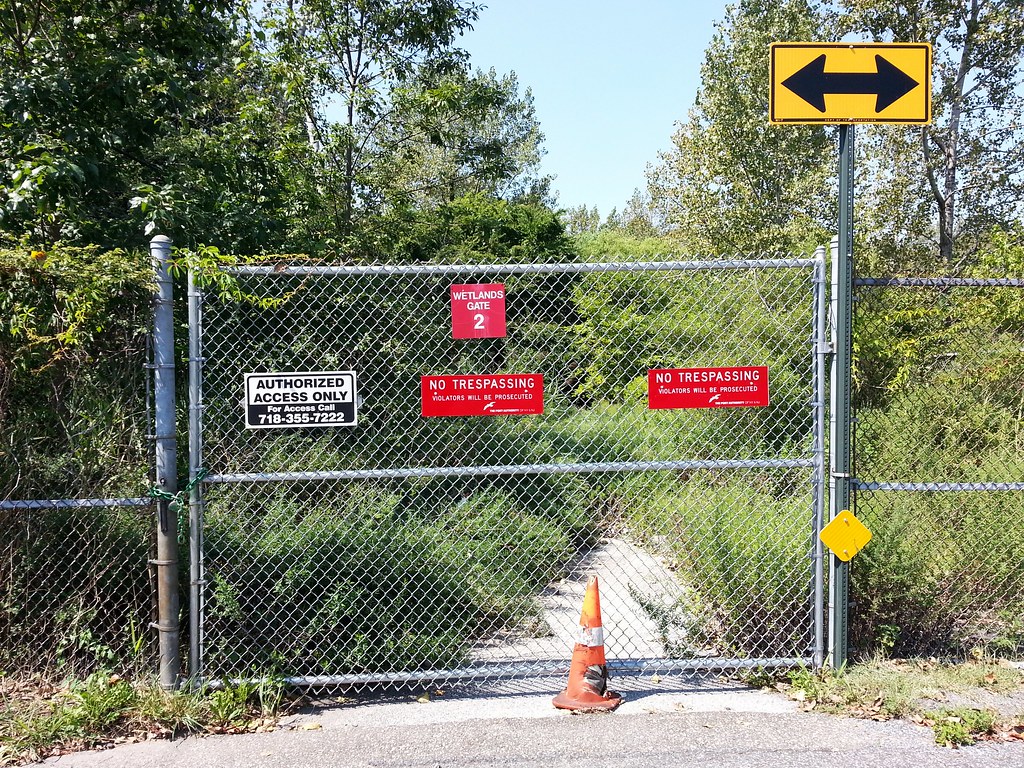
Here we have another enigmatic parcel of land belonging to the Port Authority. Regarding the previous one — that mysterious hill over by the Rikers Island Bridge — I received an email from a current PA employee saying that the hill is known internally as Ingram's Mountain, and that it was supposedly created from the rock excavated during the construction of the Lincoln Tunnel's third tube.
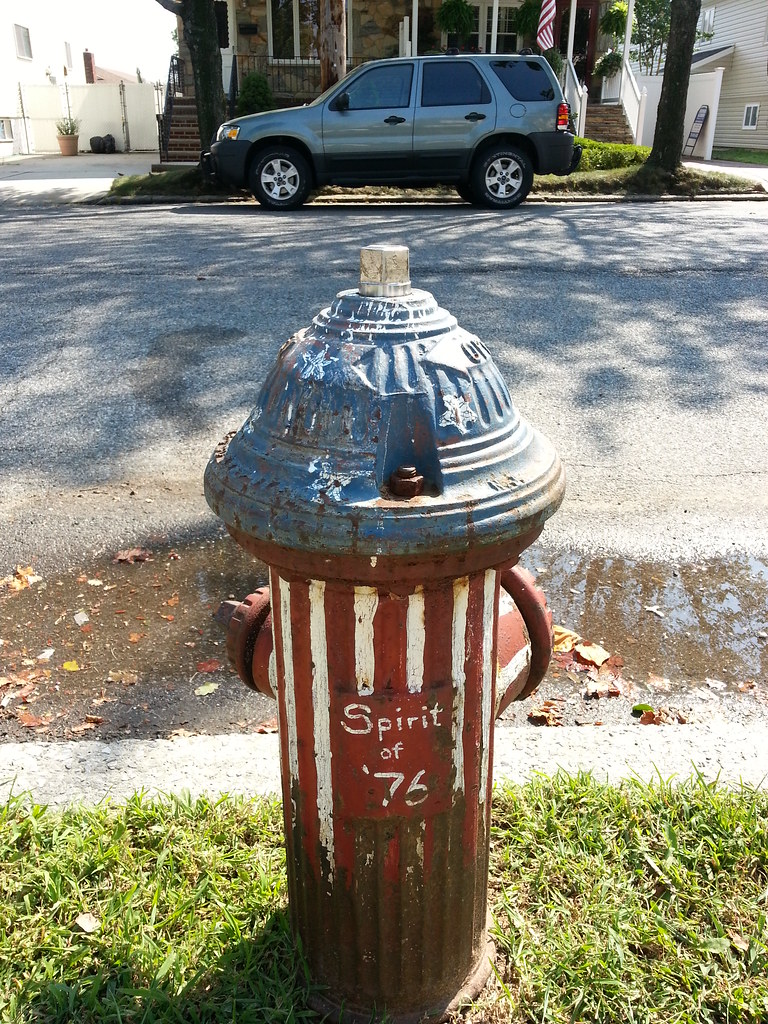
This looks too fresh to be its original paint job. It must have gotten a new coat sometime in the years since.
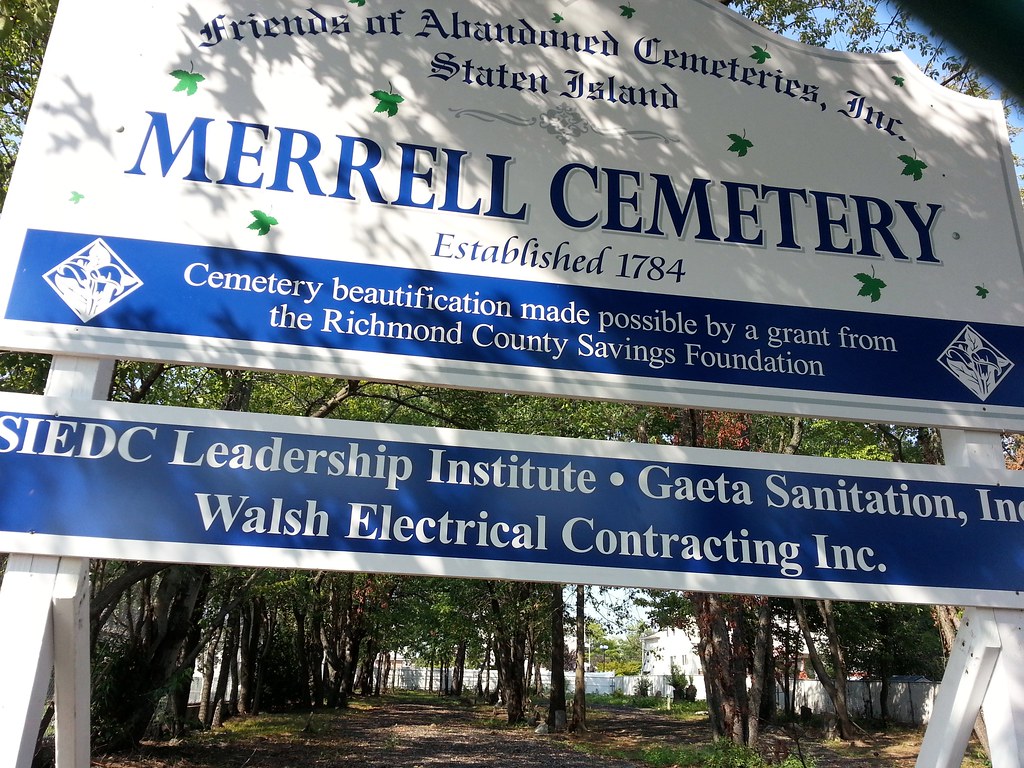
This little cemetery just underwent a pretty thorough cleaning a few months ago. (There are headstones back there, but they're tough to see without zooming in.)

